A few years ago I found myself in hospital in a ward on my own, with wires attached to me. Nobody came to see me and the nurses avoided me. It was really strange but I think they knew something I didn’t. There I was – with nothing to do, and nowhere to go.
Does that phrase sound familiar? It didn’t to me then, because I had not begun my mindfulness training. When I hear those words it soothes me and I can feel deep emotion & gratitude arising for the Mindfulness practice and how it has helped me – helped me to first notice anxiety rising; notice the sensations of anxiety; be with the anxiety; be curious about the anxiety; welcome the anxiety; offer the anxiety some self-compassion; allow the anxiety to move on through me.
Me anxious? That was never a thing. And then it was.
I had gone from a hectic busy family and work life to this empty silent hospital room. It was just like I had fallen out of an aeroplane from a great height and found myself in a foreign country. In the middle of a desert. When I think back, it was like being dropped into someone’s meditation, empty spaciousness with room to just be. Nothing to do nowhere to go.
That my body had cleverly managed to physically manifest that for me when I think of it now was quite something.
I became acutely aware of emptiness; the nothingness contrasting my busy-ness, no-one to organize but myself, acutely aware of every heartbeat and muscle tension and worried thinking. My heart had been skipping beats. Doing too many beats. Beating too fast. Stopping and freaking me out which was perpetuating the adrenaline rush which continued to make my heart erratic. I was having an acute, never-before-experienced panic attack. But it went on for days. It was debilitating. I couldn’t look after my toddler. I couldn’t DO anything. My body said NO. STOP. ENOUGH. I thought I was going to die. I had never had a panic attack before (“I’m not that sort of person”).
I sat on the bed wondering what I was doing there. I wasn’t ‘conscious’ in the mindful sense and I didn’t have the mindfulness training to know what was happening while it was happening – I did have self-judgment – what a big fuss – don’t make a fuss – what about the kids – I have let them down, really harsh on myself – not liking this helplessness and having to rely on others to help look after the children and a whole load of other thoughts banging around in my head. Contrasted with the empty room.
Here I was in a body that had decided it had had enough. I was obviously not listening to it, it was going to do a number, give me something to stop me in my tracks. What my body did to me worked. I had to stop. I had to rest. I must have been in my late 30’s. With two teenagers and a toddler and a self-employed business going into schools and running community projects and design projects I was full on.
The body had been giving me signs – a debilitating bout of bronchitis had me take to my bed and put me out of action for 8 weeks. Despite being so weak – I was being pressurized to continue to work by a well meaning colleague – “you’ll feel better”. No I wouldn’t feel better. The problem wasn’t about feeling better – it was about my inability to say NO.
I would say YES to everything. Every job that came my way – yes helping someone out – yes – I was out there, out there, out there, and never a moment to tend to ‘in here’. Always worried about money.
So this was your classic wake up call – and it could have been worse I was luck y t was ‘just’ a panic attack. It made me wake up; but attending ‘Mindfulness anything’ was not possible in rural Wales at that time, nor was escaping to Samye Ling the Tibetan Buddhist Retreat Centre – too much going on at home and no money to do that. I didn’t really think it was an option.
I’m not sure how I got through the next few years. It wasn’t the doctor that explained the panic attack to me he wouldn’t say those words– it was the nurse who showed such reassuring compassion towards me in my fearful, l state – there was a stark difference in the approach – the doctor concerned with the measurements of various bodily functions, the nurse reassuring the mind and soothing me with kindness. She talked to me about what it might be. That it might be doing too much. Pushing myself too much – what was that about?
From then until now – has been some process of unravelling; I managed to get myself onto the Level 1 Mindfulness Training with the Mindfulness Association at Samye Ling, and the process of turning my life around began. There’s no going back. Mindfulness is for life.
Dealing with Anxiety is not a quick fix. Anxiety seems to be a number one problem for people. We need to get down to the root of the issue which is complex and we are dealing with a brain which also includes the ‘reptilian brain’ from which the more developed Limbic and Neocortex subsequently developed but it is still there, intact alive and kicking in our sophisticated Homo Sapiens brain. That means we are still prone to those animal survival reactions – fight, flight and freeze. In our modern society even though we aren’t threatened by bears and wolves – the mind will be triggered by anything it regards as threat which leaves us in a more or less perpetual state of anxiety, with cortisol and adrenaline pumping through us which triggers the sympathetic nervous system and reduces activity in the (soothing) parasympathetic nervous system. Causing a vicious cycle of stress and anxiety as we don’t have anywhere to run to – we end up tense and jumpy, and drained.
Mindfulness helps us to reactivate the parasympathetic (rest and digest) nervous system – through controlled attention on breath which soothes us and by keeping the mind focused in Mindfulness meditation. SA McLeod (2010) found in a study What is the stress response in Simply Psychology https://www.simplypsychology.org/stress-biology.html) that with only 8 weeks of daily meditation participants reported a decrease in negative mood, reduced anxiety, as well as improved attention, working memory (anxiety affects memory) – and these results were observed in non-experienced meditators.
I can say now, what the doctor didn’t tell me then – if you’re anxious? The best thing to do if you don’t want to take a pill – is Mindfulness practice.
The untrained, busy, ‘unconscious’ mind never gets a break. It tells us stories about ourselves that perpetuate unhealthy live choices and work habits. We find ourselves too busy to look after our self, and if we don’t look after our own mental health our physical health will deteriorate and we are unable to look after others.
We become the woodcutter who has 100 trees to chop down, but who will not stop to sharpen his axe.
How do we get ourselves out of this tight multitasking, busy-makes-us-cool mindset that society demands of us?
We stop. We offer ourselves time to do nothing. Mindfulness at the start is fundamentally training us to DO nothing. To simply sit and breathe. To just BE. With ourselves.
So simple. So tricky. The mind will scream at us all the things we need to be doing. Oh yes – scream away. I’m just going to sit here, and watch the agitation of the mind. I have claimed my true nature back from the wild, untamed mind.
It’s taken time. There is no quick fix. Energy follows focus.
Training the mind is accompanied by its twin – untraining the mind. This is how the ‘work’ gets done.
This week I had an anxious situation come up. My first session teaching the MBLC course. It was just an introduction, and you might have read my blogs as I went through the training – I had to jump up and down a lot before the sessions to get rid of the adrenaline…! so fearful and definitely ready to run!
So I was waiting for it and as the time approached, there was something missing. I wasn’t anxious. I was expecting anxiety and it was nowhere to be found. I was excited, and it feels a little similar, maybe its physiology is similar but this was now turned into enegry and focus, not something debilitating.
How can it be that just by sitting here, it comes undone?
Wishing you a peaceful year this year – a year where at times, you allow yourself to have nothing to do and nowhere to go!
– and if you have anxiety know that you are not alone. If you do – you’d be welcome to join our daily meditation sessions which are free and online.
You can keep your camera off, and just join in with the practices. It takes effort to maintain a practice so use the FREE MBLC (Mindfulness Based Living Course) MEDITATIONS APP and the daily sits to support you.
Warmly,
Lisa Hellier.
Weekly Challenge
Feeling anxious? You are not alone.
Prepare the mind to do nothing. Resolve to make this a new habit. Find a comfy chair or cushion make sure you are warm.
We begin our meditation by noticing how we are feeling, acknowledging the thoughts and accompanying physical sensations; any emotions present right now.
Settling into our posture, we give the mind something to occupy it as we guide it in to land! Begin by focusing on organizing the body. Yes OK spine straight, yes, chin down, yes, relaxed but upright and alert, yes, feel the connection with the chair or cushion, and feet on the floor.
We are coaxing the mind back into the body. We go further; by reuniting body and mind, heart and mind, through following the soft invitation that is our breath, we gently ease our stuck mind down and down, softly and gently we drop out of busy-ness of thinking and come to rest, a soft landing, in to feeling the sensations in the here and now.
Now just be still, with the soft flow of your soothing breath deepening and lengthening a little.
Rest as long as you need. Notice the mind urging you to action. Be with that. See it. Come back to your soft and soothing breath. Nothing to do. Nowhere to go.
Beginner’s Mindfulness Course
STARTING ON THE 12th JANUARY
If you’d like to begin Mindfulness we have a new Level 1 Foundations of Mindfulness course beginning on the 12th January on a Wednesday with Jacky Seery and Paula Vale.
Watch the little introduction film from Jacky HERE
Photo by Maria Camila Castaño from Pexels


